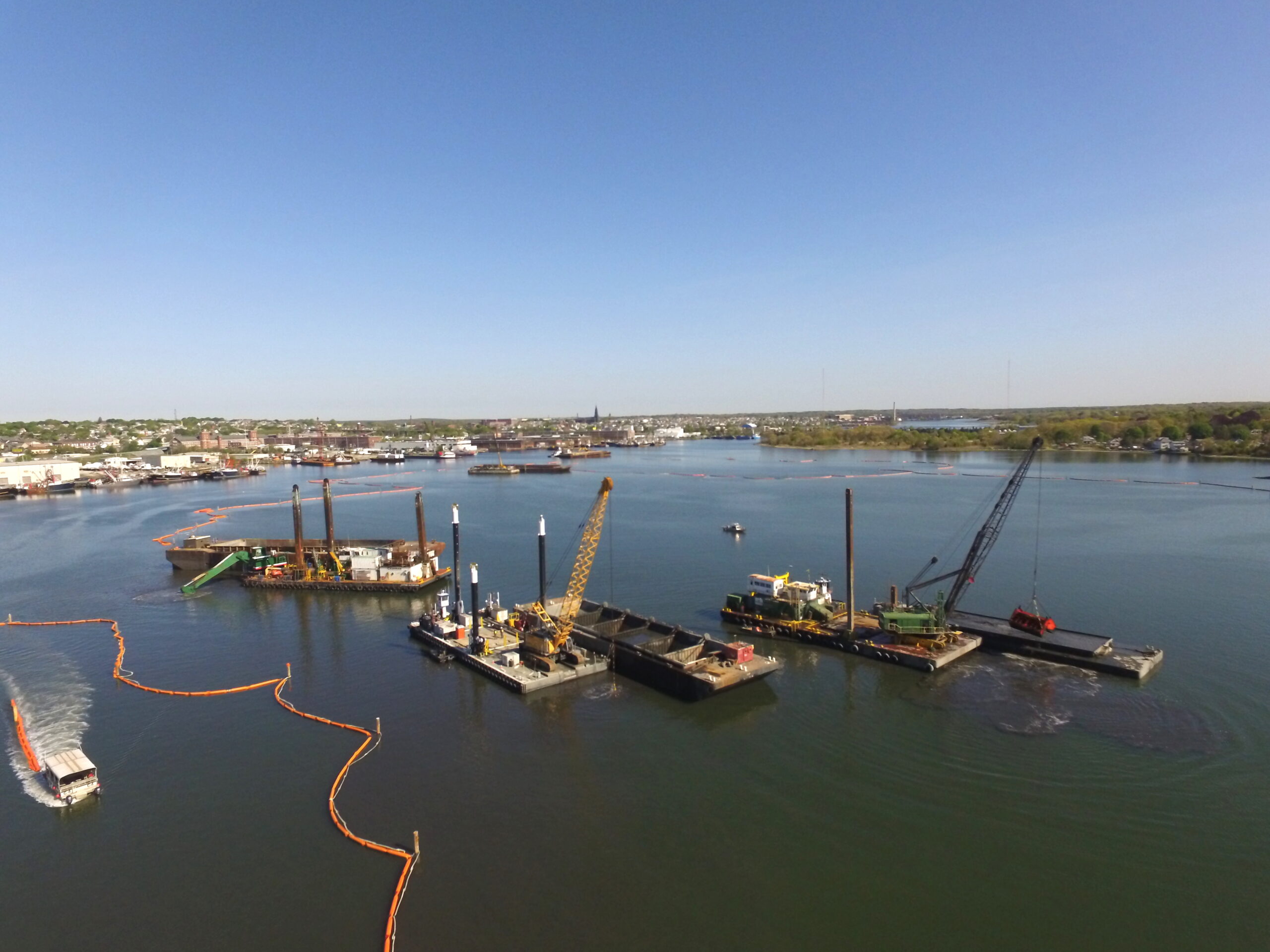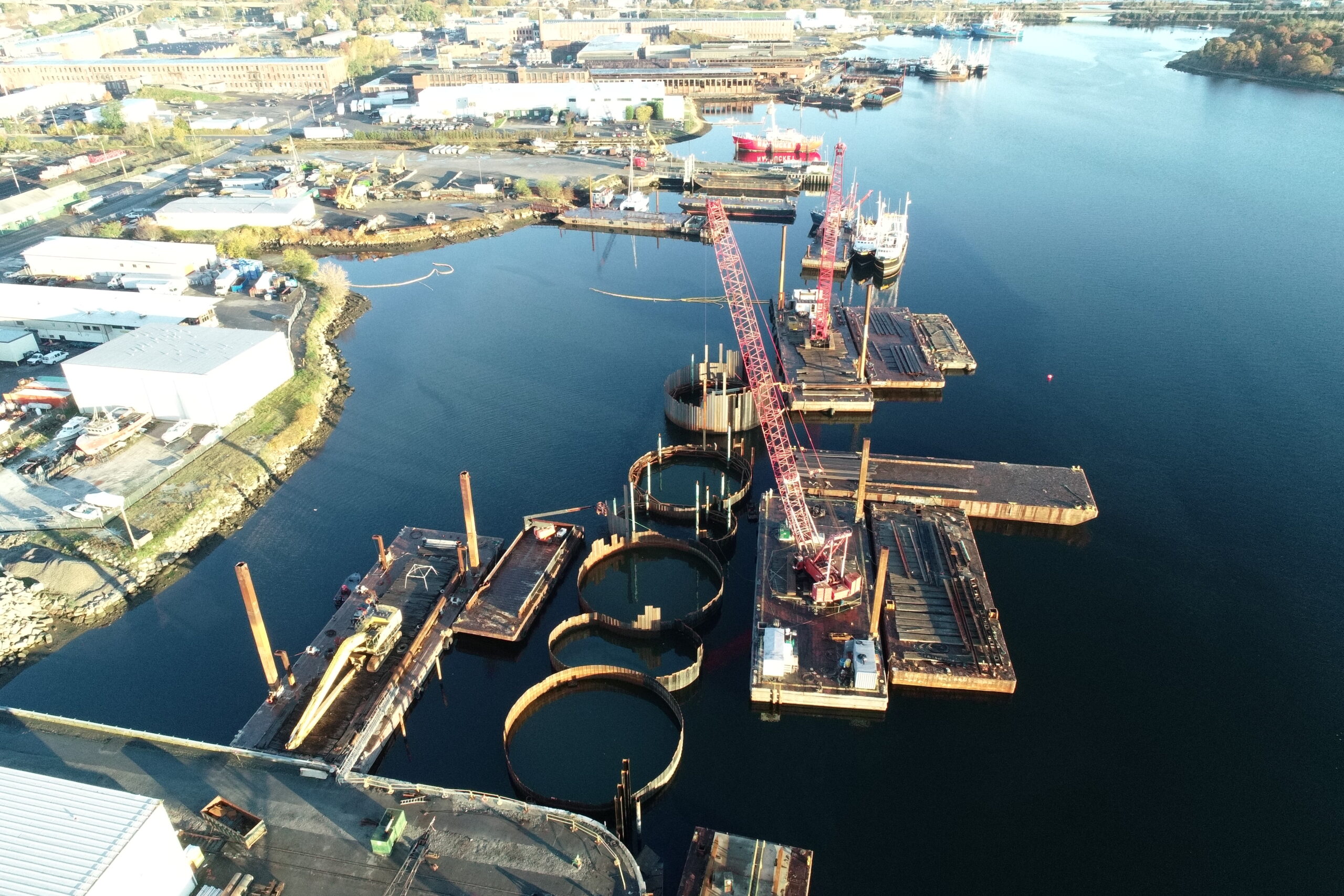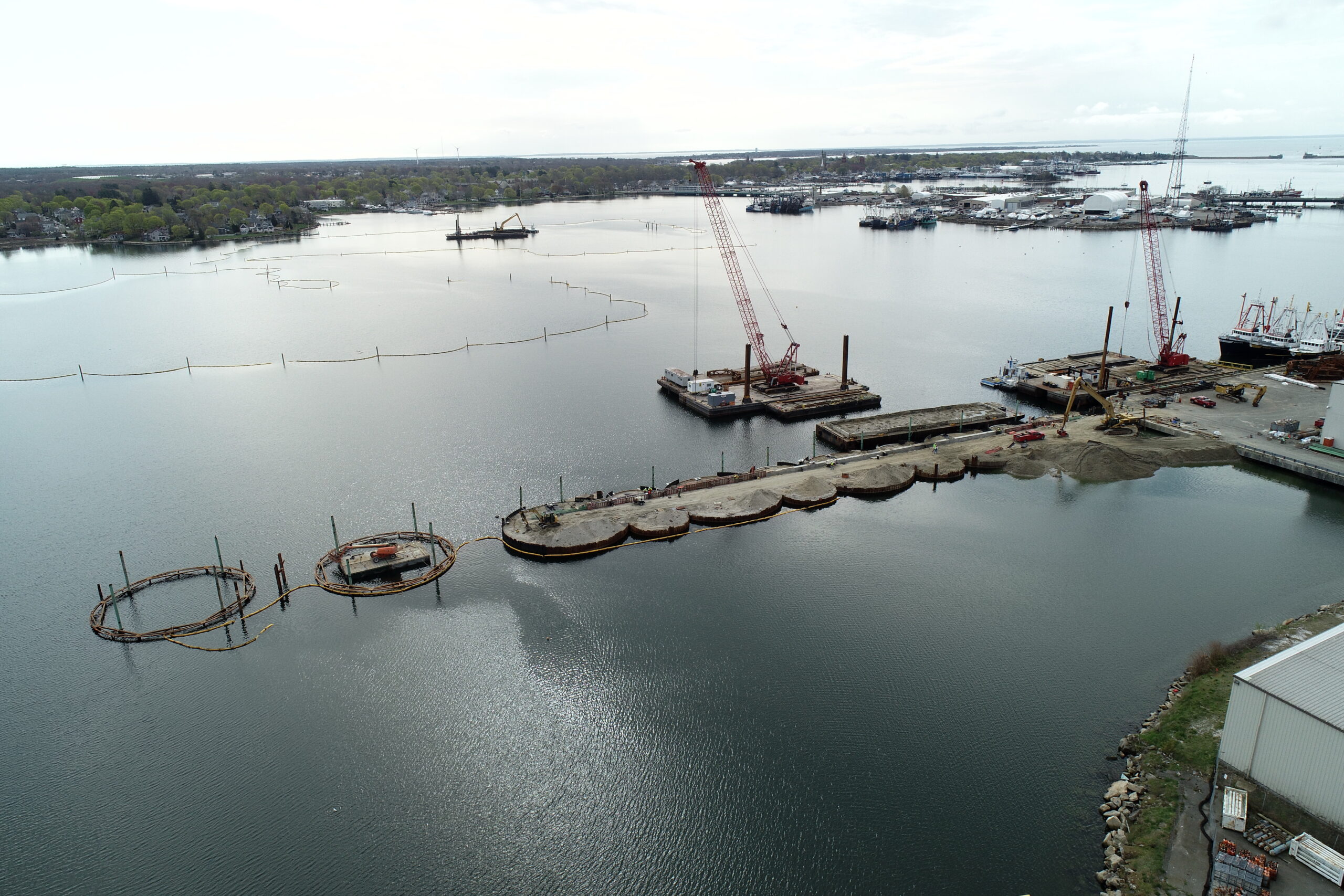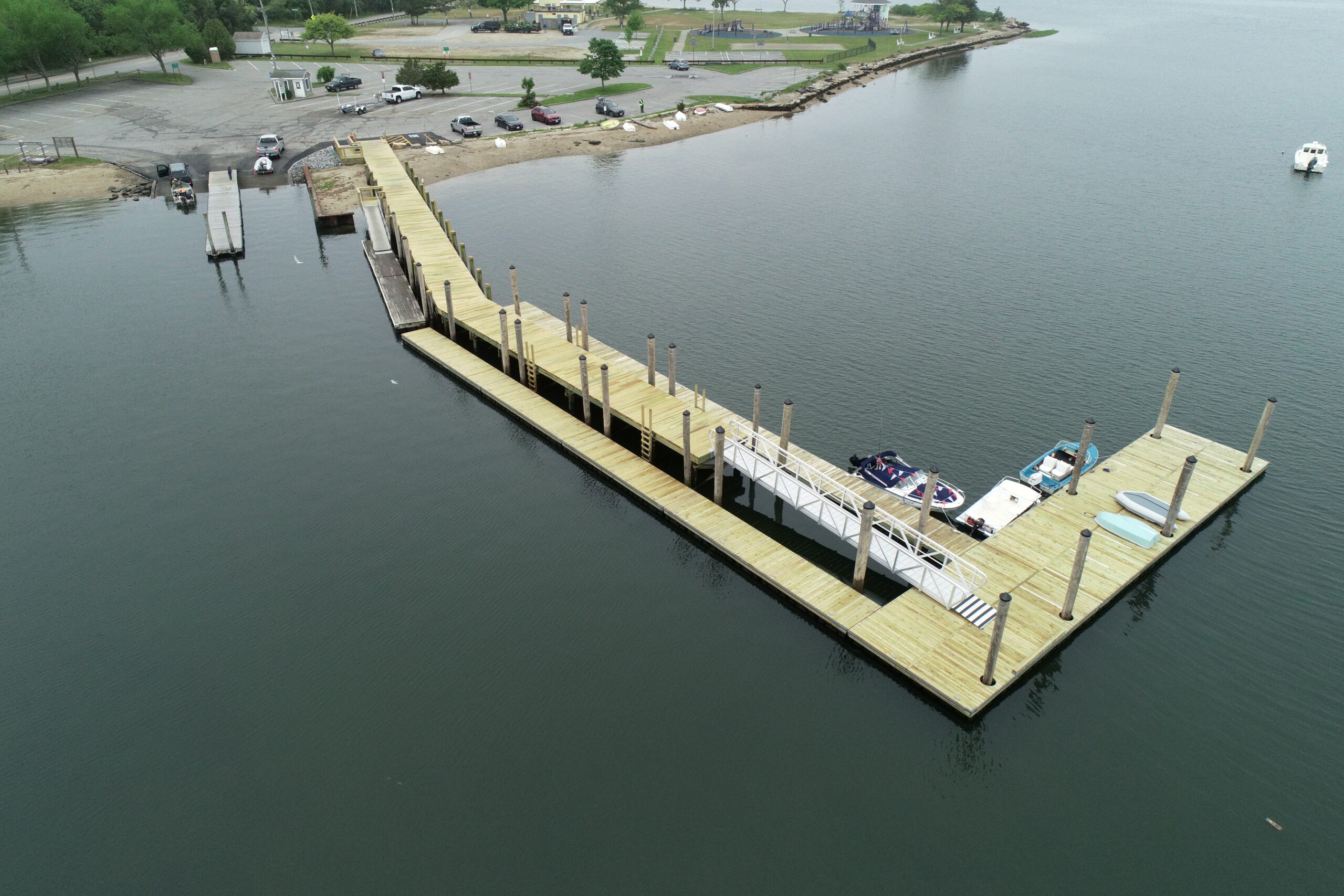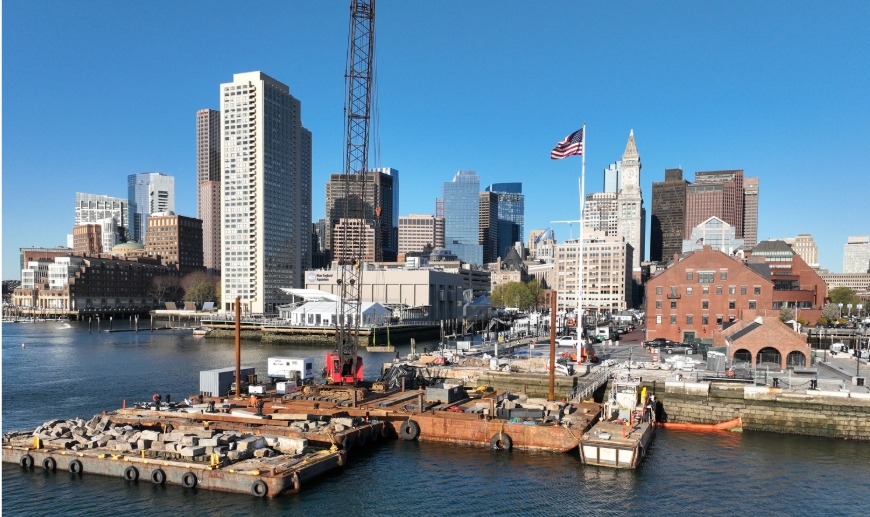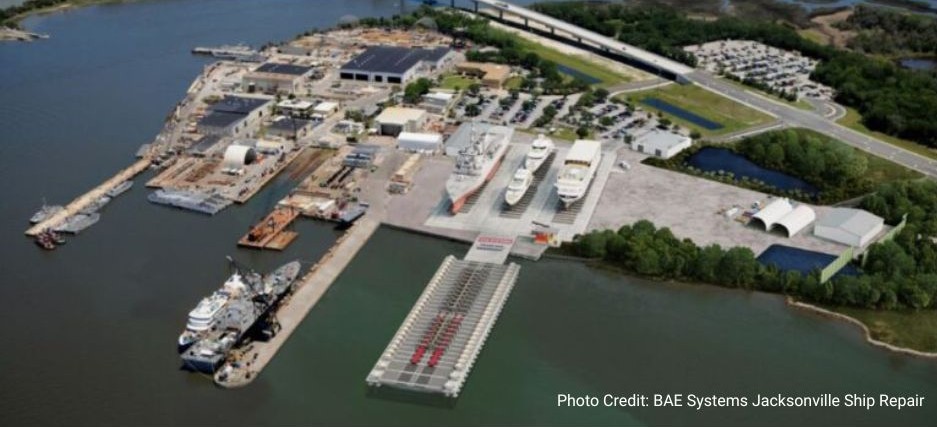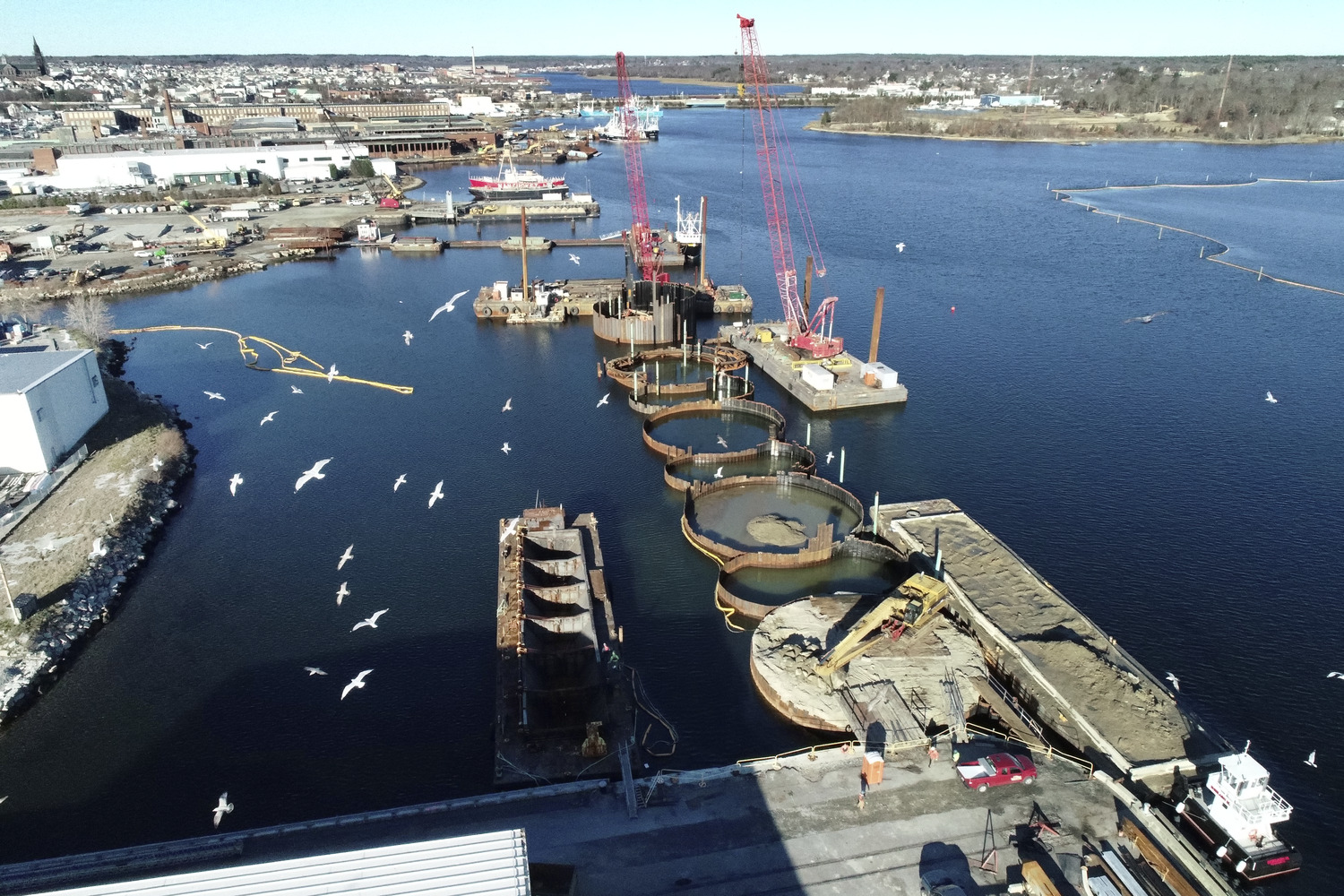
Background
The Port of New Bedford in Massachusetts is the number one commercial fishing port by value in the U.S., generating $11.1 billion in economic value each year by supporting a blend of commercial, industrial, and recreational opportunities. Some of the port’s historic manufacturing activities have resulted in high concentrations of PCBs, or polychlorinated biphenyl, a toxic compound once widely used in hundreds of industrial and commercial applications, and heavy metals. Since being designated a Superfund site in 1988, the Environmental Protection Agency, the Massachusetts Department of Environmental Protection, and the port have dredged approximately 1.4 million cubic yards of contaminated sediment from the harbor through the use of Confined Aquatic Disposal (CAD) cells.
Foth was engaged in 2018 to undertake three major initiatives.
- The first is the design and construction of the New Bedford Port Authority’s (NBPA) fourth CAD cell (CAD Cell No. 4) with disposal capacity for approximately 500,000 cubic yards of contaminated dredged sediments from within the harbor.
- The second initiative is the design and construction of a North Terminal extension, including the creation of multiple acres of upland site from beneficial reuse material generated from the construction of CAD Cell No. 4.
- The third is Phase V dredging, consisting of dredging more than 40 sites throughout the New Bedford and Fairhaven Harbor with disposal into CAD Cell No. 4.
Approach
The construction of CAD Cell No. 4 in the lower harbor area included dredging and disposal of a top layer of PCB- and heavy metal-impacted sediments into existing CAD cells, disposal of a middle layer of suitable (clean) materials at the approved offshore disposal site, and beneficial reuse of a bottom layer of structurally suitable dredged materials as both backfill at the North Terminal extension site and capping material for an existing CAD cell.
The North Terminal extension added 660 linear feet of bulkhead and nearly 5.5 acres of terminal area. It is designed to meet the infrastructure needs of commercial fishermen, the offshore wind industry, and other port users. Foth designed the terminal extension, including construction of a cellular cofferdam bulkhead, construction of a pile-supported concrete deck, installation of stormwater, electrical, lighting, and water utilities, backfill and compaction of the cofferdam footprint and site infield area, and finished grading of the proposed site to create new upland terminal area.
Services provided from conceptualization to construction included:
- Feasibility study
- Design alternatives analyses
- Site investigations (topographic and bathymetric survey, probing, vibrocore, and geotechnical borings)
- CAD cell siting analysis and reporting
- Federal, state, and local permitting
- Design services over multiple disciplines, including structural, geotechnical and civil
- Rendering and visualization
- Cost estimating, budgeting and scheduling
- Preparation of bid documents
- Construction management and resident engineering
Results
At the completion of the construction of CAD Cell No. 4, the Phase V navigational dredging project will be conducted at more than 40 commercial and residential sites along the New Bedford and Fairhaven shoreline. The cleanup effort will provide a major boost to the local economy by maintaining berths and stimulating development of shoreline sites with improved navigable access.
Foth’s expertise in dredging, management of contaminated sediments, marine infrastructure and port development provides significant value to the port, optimizing the environmental cleanup, navigation and commercial uses within the harbor. Funding for the project included local, state and federal sources totaling over $52M.
Markets: Waterfront and Marine
Services: Coastal and Waterfront Engineering and Dredging, Construction Services, Environmental and Regulatory Services, Geospatial and Geophysical, Remediation, Strategic Consulting and Planning

